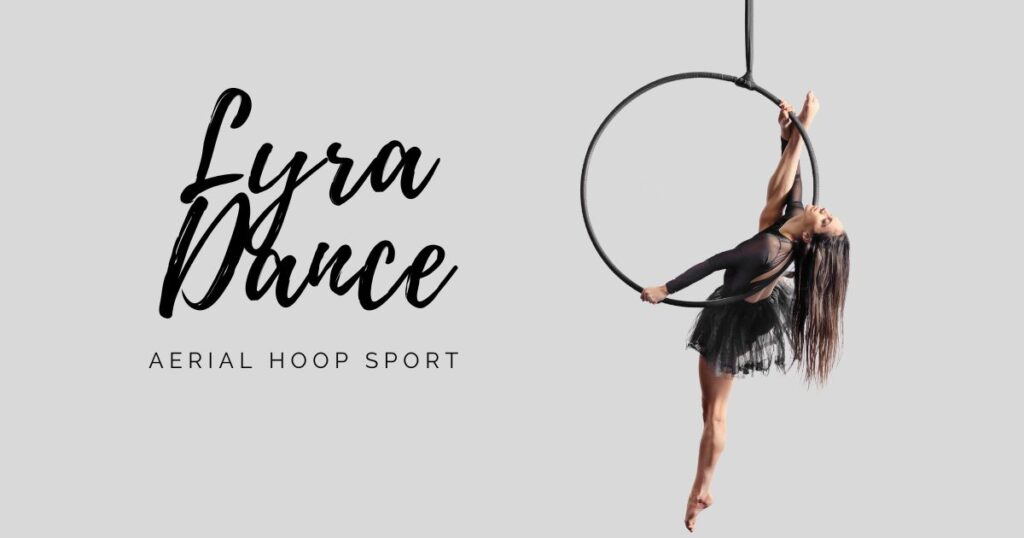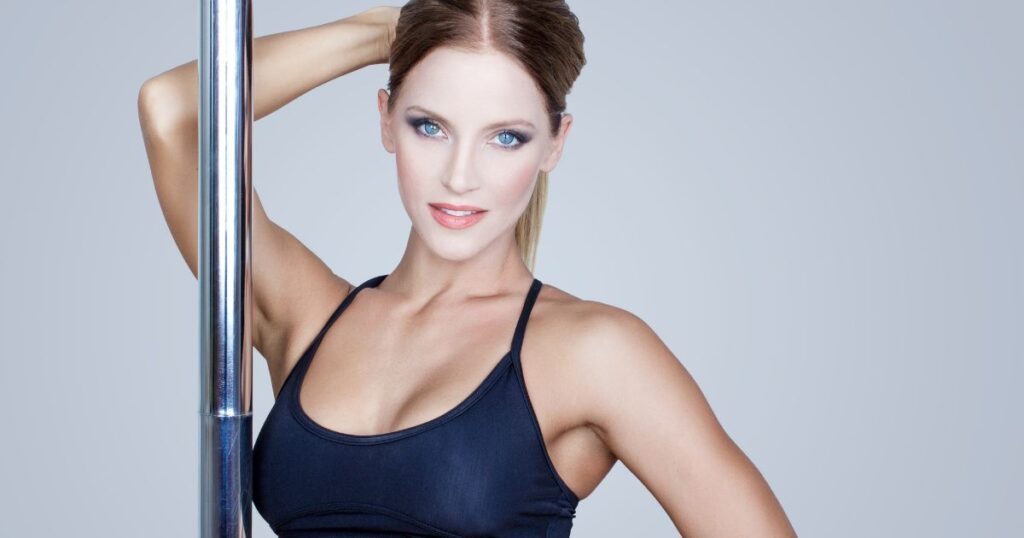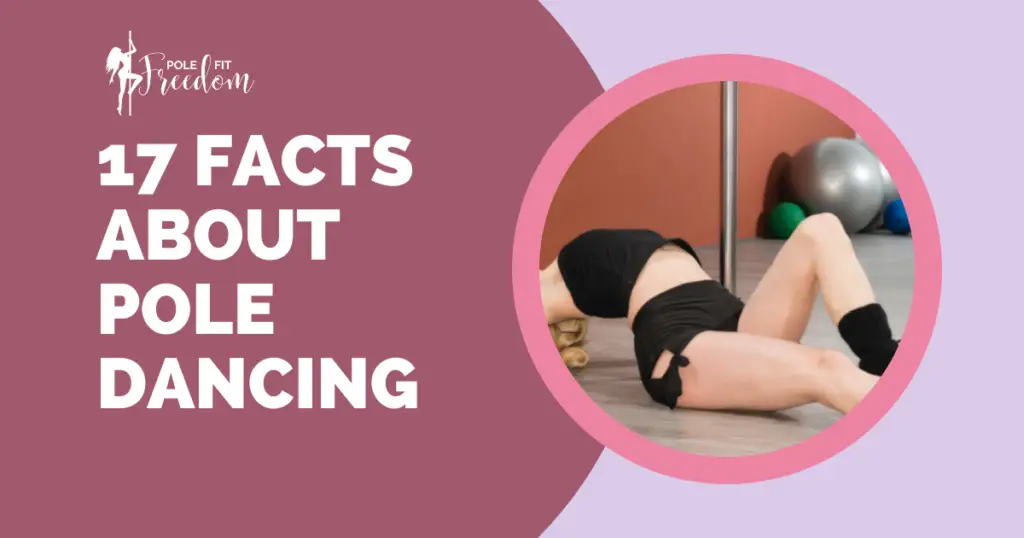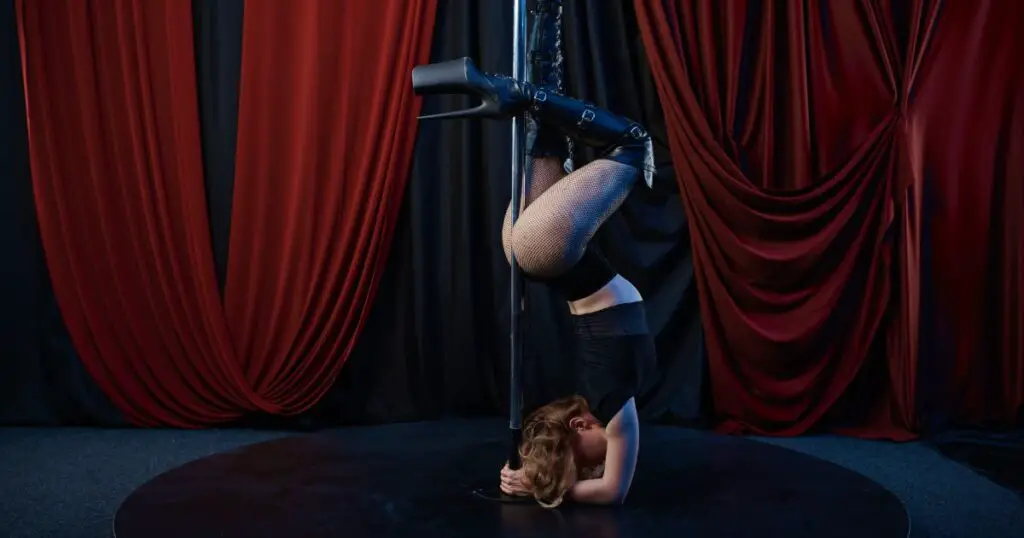Are you looking for a new and exciting way to challenge your body and improve your fitness? If so, you may want to consider trying lyra dance!
Lyra dance (aka aerial hoop) is a beautiful and challenging form of dance that can improve your strength, flexibility, and control, and can provide a fun and exciting way to improve your overall fitness and well-being.
In this blog post, we will be discussing Lyra dance in more detail, including its history, benefits, and how you can get started learning this exciting and beautiful art form.
Keep reading to learn more about lyra dance, and how it can benefit you as a pole dancer and aerial fitness enthusiast.
What Is Lyra Dance?
Lyra dance, also known as aerial hoop, is a type of aerial acrobatics that involves performing feats of strength and grace while suspended from a circular steel hoop or ring.
It is often performed in circus and cabaret shows, as well as in aerial dance and pole fitness classes.
Lyra dance involves a wide range of movements and poses, including hangs, wraps, and spins. It requires a high level of strength, flexibility, and control, and can be challenging and physically demanding.
However, many people find it to be a fun and exciting way to improve their fitness and flexibility, and to learn new skills and techniques.
Lyra dance is often performed in combination with other aerial arts, such as aerial silks or trapeze, and can be a beautiful and exciting addition to any performance or fitness routine.
Is Lyra Dance The Same As Aerial Hoop?
Yes, Lyra dance, Lyra hoop and Aerial hoop all refer to the same activity.
The name ‘Lyra’ is Latin and originates from the name of a musical instrument (similar to a harp) that is somewhat hoop shaped.

How Do You Get Started Learning Lyra Dance?
To get started learning lyra dance, you should first find a qualified instructor or studio that offers aerial hoop classes. You can search online for aerial dance studios in your area, or ask at local circus or dance schools to see if they offer lyra classes.
Once you have found an instructor or studio, you can sign up for classes and start learning the basics of lyra dance.
In your classes, you will learn how to safely climb and descend the hoop, as well as how to perform basic poses and movements.
Your instructor will also teach you proper technique and form, and will provide guidance and support as you progress and develop your skills.
In addition to taking classes, you can also practice at home to improve your lyra skills.
You can try basic exercises and stretches to improve your strength and flexibility, and you can also try to practice some of the movements and poses that you have learned in class.
However, it is important to always use proper safety precautions when practicing at home, and to avoid attempting any advanced moves or tricks until you have mastered the basics and have the proper supervision and support.
Installing an aerial hoop at home is not difficult or expensive. Read our guide for the best aerial hoops for home use here.
What Skills Are Required For Lyra Dance?
There are several skills that you will need to learn for lyra dance. It doesn’t matter if you don’t have all of these skills right away, as practising with the hoop will help you improve these skills over time.
- Strength: Lyra dance involves a wide range of movements and poses that require a high level of upper body and core strength. This includes hanging and suspending your body weight from the hoop, as well as performing dynamic movements and transitions.
- Flexibility: Lyra dance also requires a high level of flexibility, particularly in the hips, back, and shoulders. This is necessary for performing many of the poses and movements involved in lyra dance, such as inverts and splits.
- Control: In addition to strength and flexibility, lyra dance also requires a high level of control and coordination. This is necessary for performing precise and graceful movements, and for maintaining balance and stability while suspended from the hoop.
- Endurance: Lyra dance can be physically demanding, and requires a good level of endurance and stamina to perform for extended periods of time. This is important for dancers who want to be able to perform long and complex routines without getting fatigued.
Gaining these skills can be challenging and certainly won’t happen overnight (just like any new workout). With practice and dedication, these skills can be developed, honed and improved over time.
How Can Pole Dancers Transition to Lyra?
As a pole dancer, you already have a lot of the strength, flexibility, control and endurance required to easily transition to aerial hoop. It’s a good idea to mix up your workouts.
Transitioning from pole dance to lyra dance can be challenging, but with practice and dedication, you can develop the skills and confidence needed to excel in this exciting and beautiful art form.
Start by finding a local aerial hoop instructor and consider installing an aerial hoop at home.
If you already have a freestanding dance pole such as the X Pole Stage or Stage Lite, you can add a Lyra to the top of your pole for a combination pole-lyra workout!
This is known sometimes as a Lollipop Lyra and is a really innovative and interesting way to combine the two sports!
Want to become an amazing pole dancer?
Open Dance Academy has over 450 online lessons, by some world famous pole dancing champions! Join now to get:
***GET 10% OFF OPEN DANCE ACADEMY***
Use the code polefitfreedom to get 10% off Pole Dancing Lessons with Open Dance Academy. This is an exclusive offer for readers of this blog!
Summary
In conclusion, lyra dance is a beautiful and challenging form of aerial acrobatics that can improve your strength, flexibility, and control. It offers many benefits for both dancers and fitness enthusiasts, and can provide a fun and exciting way to challenge your body and improve your overall well-being.
If you’re a pole dancer looking to transition to aerial and lyra, remember to start with basic classes and practice regularly to develop the skills and muscles needed for this discipline.
With patience and persistence, you can master the art of lyra and become a skilled and confident performer on the aerial hoop.
Thank you for reading, and happy dancing!






